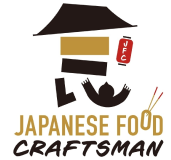To our customers in the US: From Aug 29, 2025, new U.S. customs rules may cause longer delivery times, and all orders from Japan will require higher import fees (often US $80–$200 or up to 50%) to be paid by the customer upon delivery.
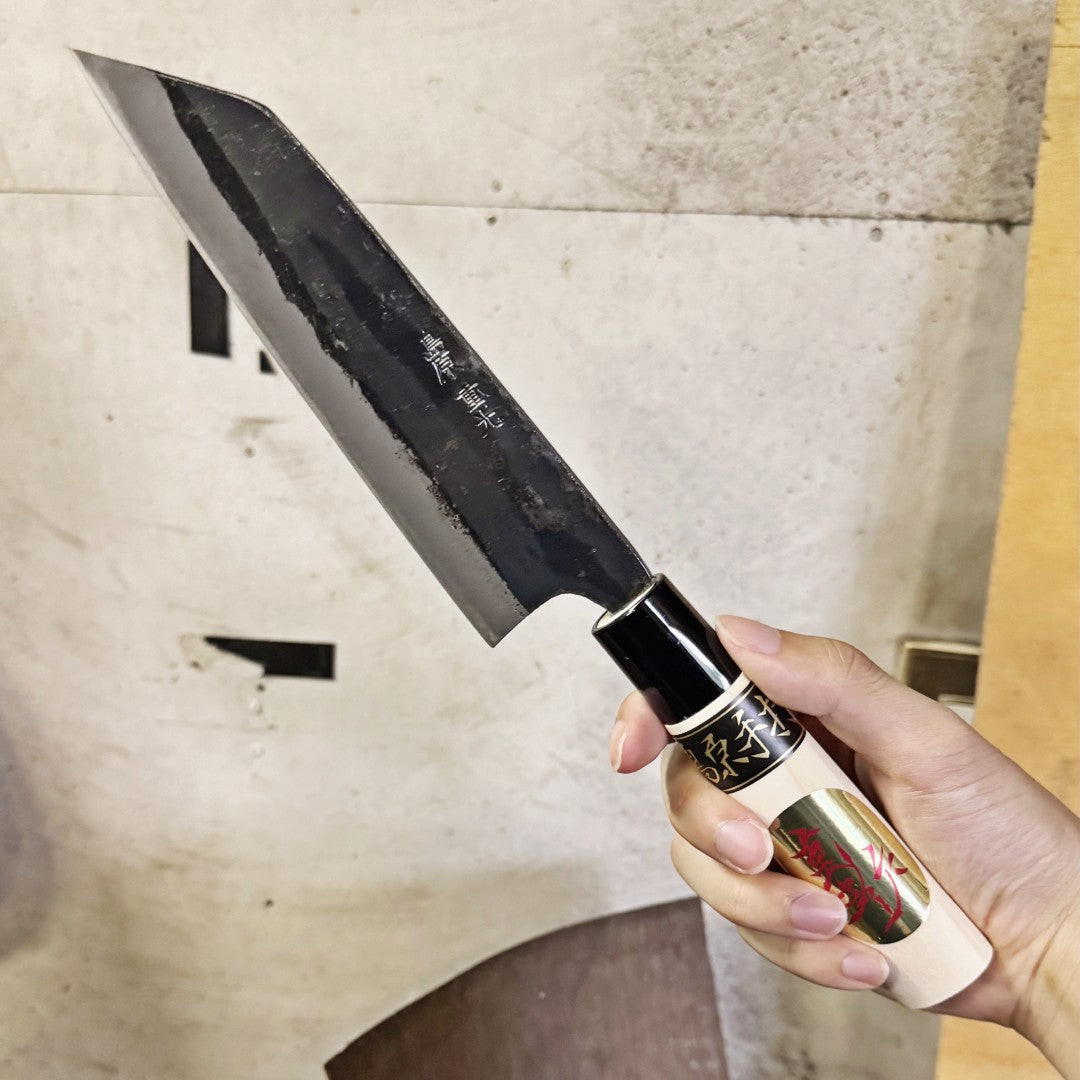

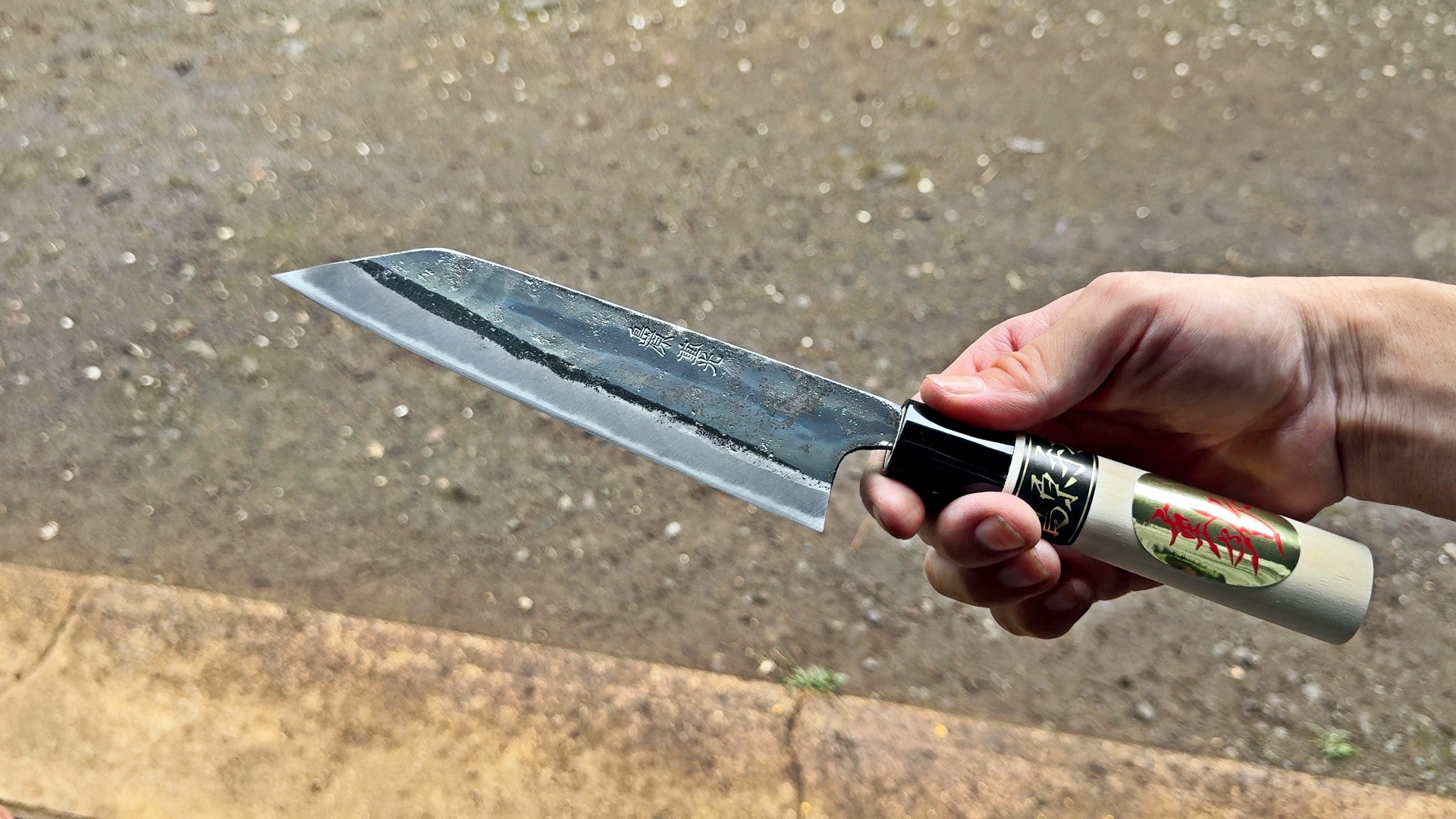

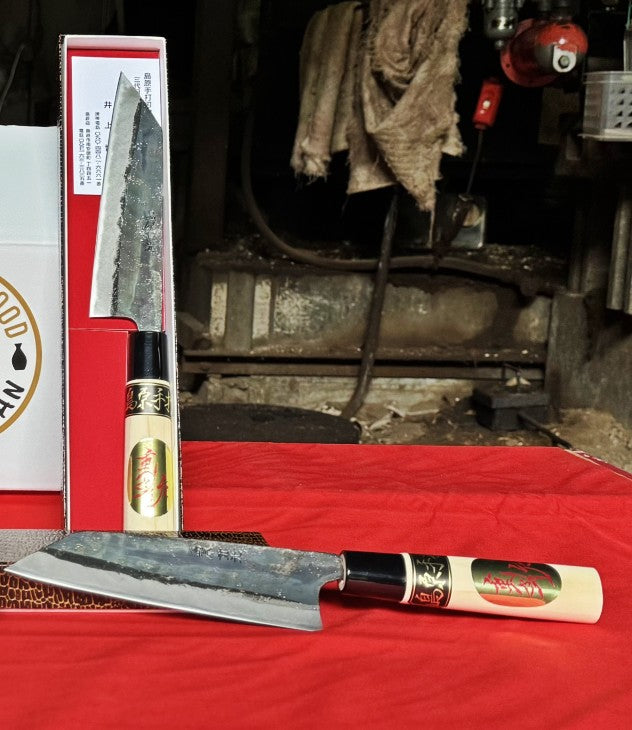

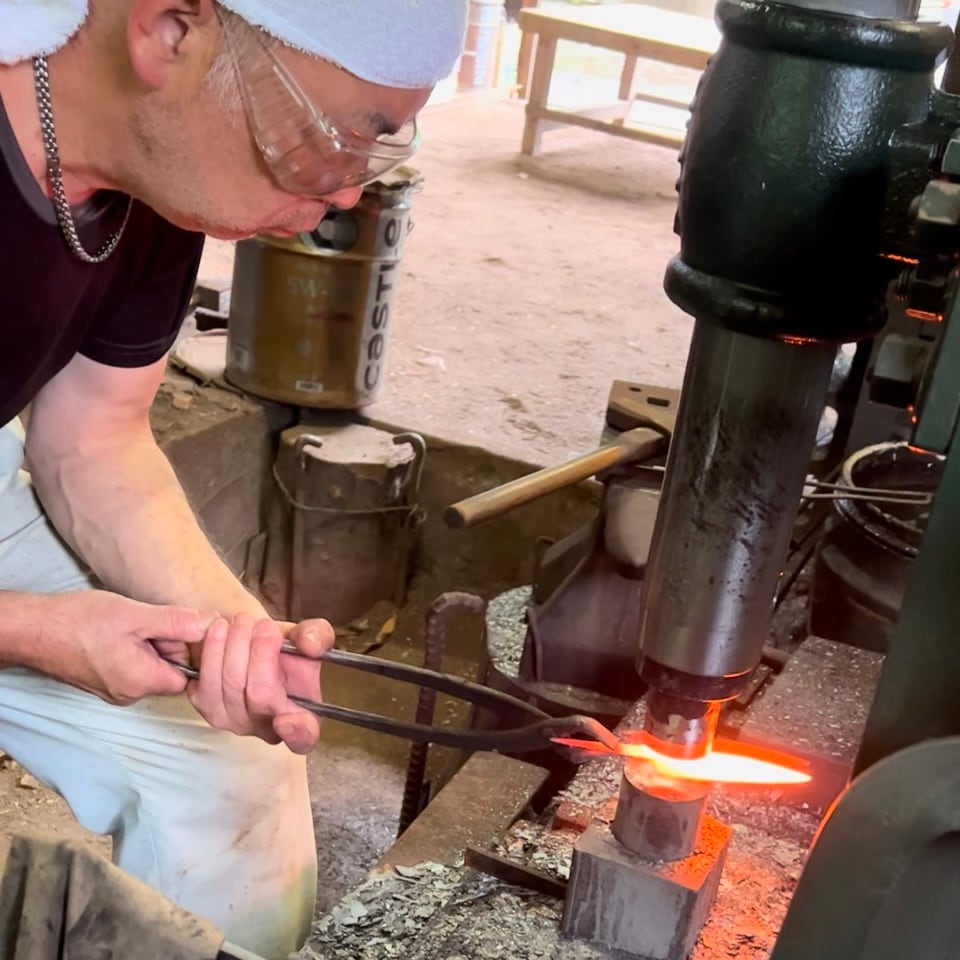









Shigemitsu Hamono Kurouchi Santoku 160mm
Includes:
- Kurouchi Santoku Kitchen Knife (handcrafted from Shirogami #1 steel, about 160〜165mm blade length, blade spine thickness approx. 2.5mm)
- Red Sharpening Stone (15cm x 4cm x 3cm)
- FREE WORLDWIDE SHIPPING
A handcrafted double-bevel Santoku knife made from Shirogami (white steel) No.1, prized for its razor-sharp edge and excellent edge retention.
Forged by hand at Shigemitsu Hamono in Nagasaki, this blade features a traditional kurouchi finish and is engraved with the smithy’s signature. The lightweight magnolia wood handle offers a natural, comfortable grip.
Includes a small whetstone to help maintain your edge.
About the blade:
This is a versatile multi-purpose knife, ideal for cutting vegetables, meat, and boneless fish—perfect for everyday kitchen use.
*Each knife is crafted by hand, so there may be slight variations in weight and dimensions. We ask for your kind understanding.
*Depending on the number of orders and smithy availability, it can occasionally take 1 month or longer for your knife to ship.
*This knife is made from steel, so it is normal for a certain amount of rust to form over time. Please use the sharpening stone included with your order to remove any rust. You will find a video which explains how to sharpen your knife at the bottom of this page.
*Depending on the value of your order and local import rules in your country, you may be required to pay additional import taxes when your package arrives.
Rebuilt and refined in Shimabara: The Inoue family’s approach to everyday kitchen knives
AS FEATURED ON YOUTUBE
Watch the making of Shigemitsu Hamono: Father and son in Shimabara forge, harden, and sharpen by hand to make knives that keep texture and flavor.
OVERVIEW
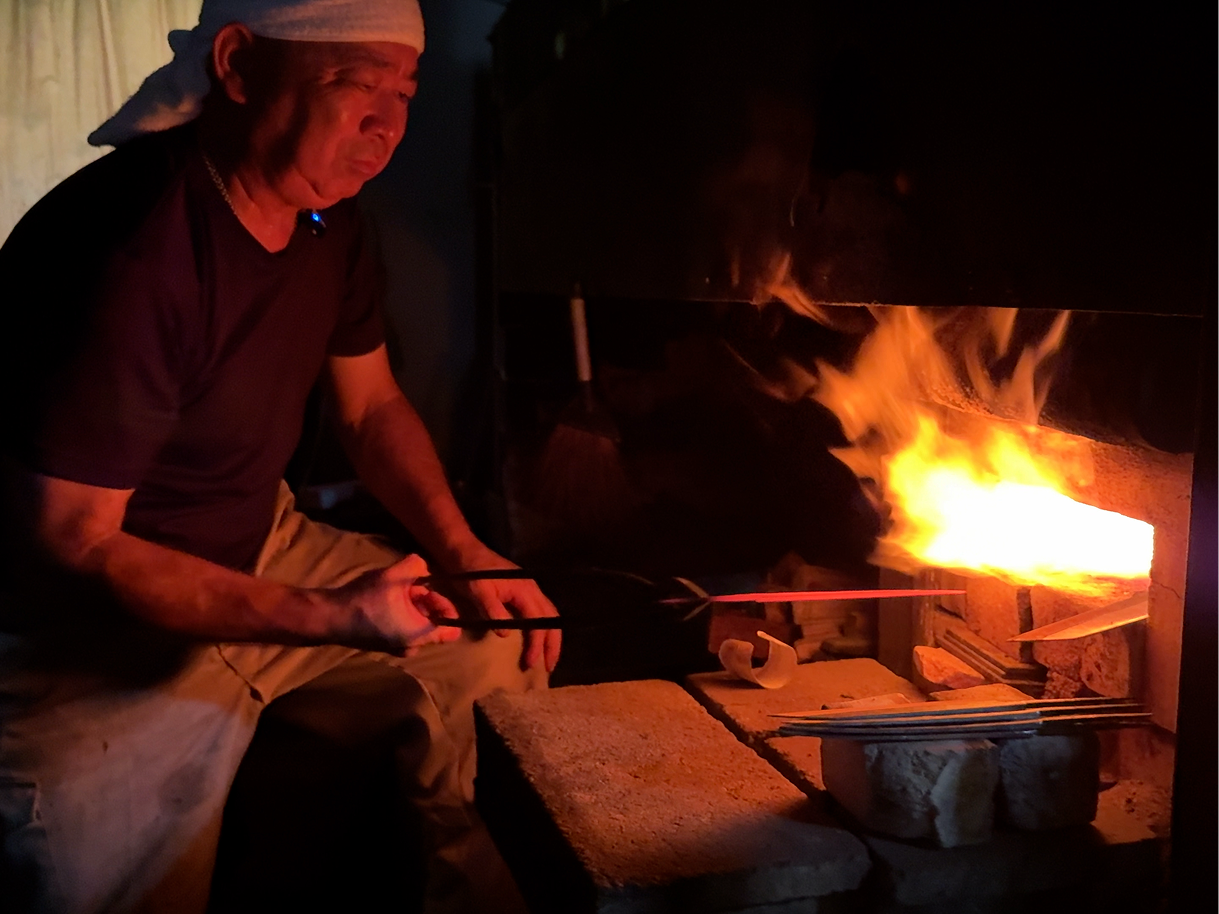
With the sea on one side and Mt. Unzen on the other, Shigemitsu Hamono has kept Shimabara’s blacksmithing spirit alive for more than a century. The forge is led by third-generation Hiroyuki Inoue, 59, who began right after high school, and his son Yuuki, 26, who followed the same path.
Their work is practical and honest: everyday kitchen knives shaped for real use. Santoku for meat and vegetables. Deba for fish, with the weight and geometry to handle mackerel or horse mackerel while still being handy for general prep. The family lost its original workshop to a mudslide during Unzen’s eruption, then rebuilt it themselves. That resilience sits inside every blade they make.
PHILOSOPHY AND PROCESS
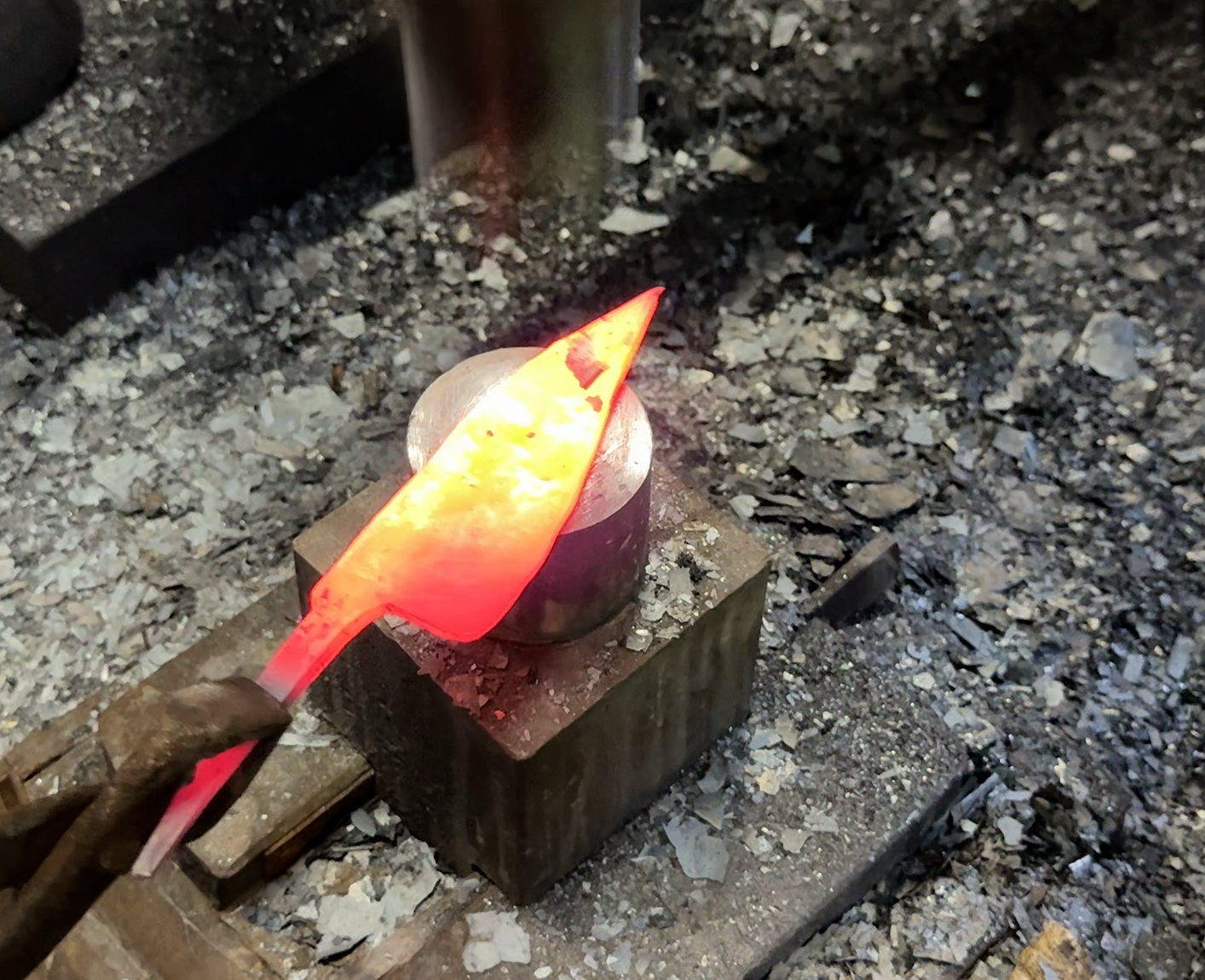
Generations at the Anvil
Hiroyuki learned under his father by watching, not by lecture. He still measures himself against that standard and says he is trying to catch up. Yuuki is eight to nine years into the craft and gets more step-by-step coaching from his grandfather.
They both point to the long road: three years to grasp sharpening, about ten to learn forging, fifteen years at least before you feel confident. Progress is daily, not sudden. The goal is a knife that customers call easy to use and a cut that simply feels right.
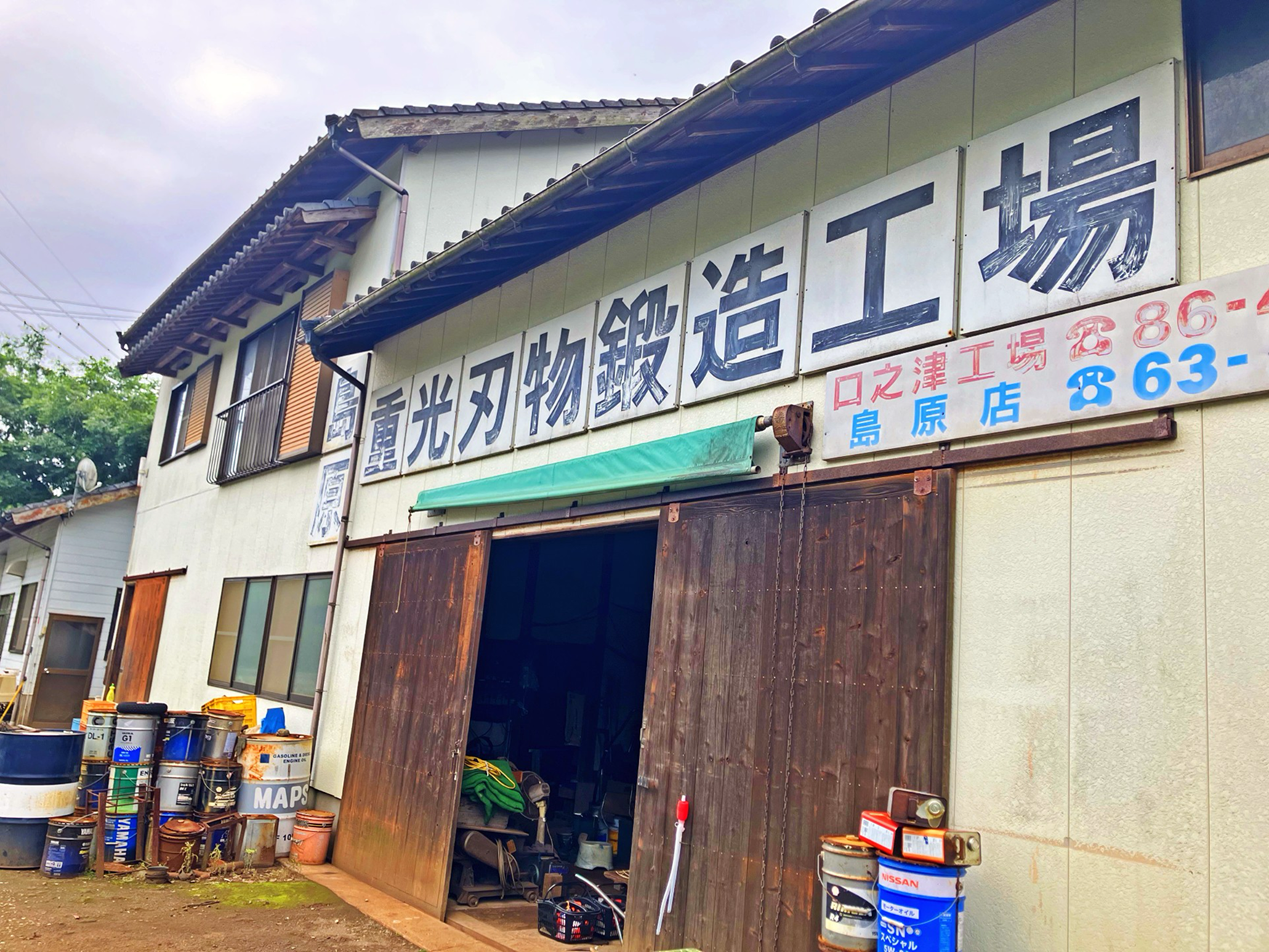
Forging With Intent
Work begins by reading colour, not instruments. Orange to yellow signals about 800°C, which is the working window. Too hot and steel can melt. The tang is drawn, then the body is stretched and shaped. Hiroyuki uses shinogi-uchi, striking in a controlled pattern so the blade takes form as it grows. Hit the edge, then the ridge. Never the soft middle.
Done well, the forged blank is already close to final size, which reduces cutting later and keeps the geometry true. Hand forging also leaves subtle undulations that help food release without added holes or grooves. They often work in batches of 100 to 200. It is not about making things cheap. It is about keeping flow and consistency.
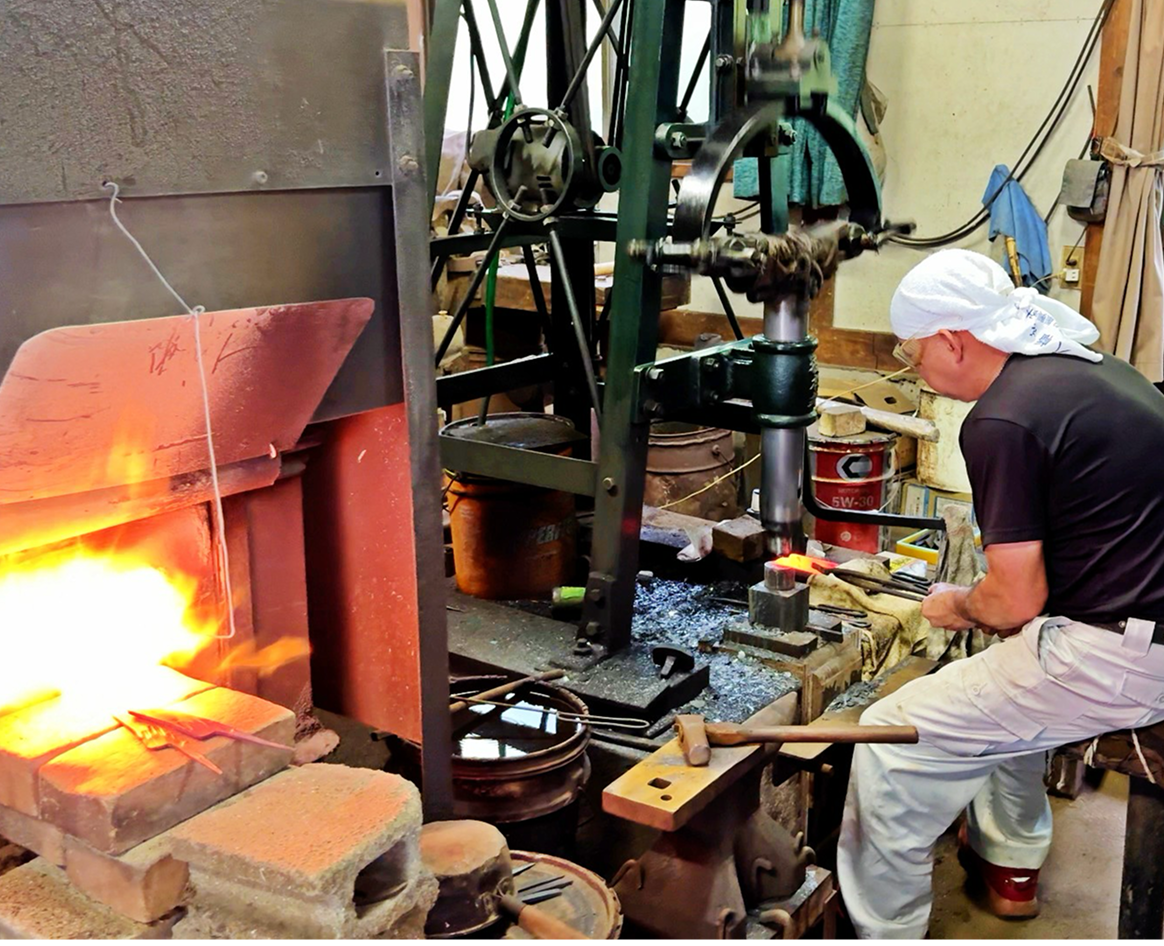
Heat, Water, and Finish
After forging comes annealing. Heat, then cool slowly. Hardening uses warm water. Too cold and the steel does not take properly. Red clay is painted along the edge to prevent an insulating air layer during the quench.
Pine is the preferred fuel for its strong flame. The family once made charcoal themselves and plans to repair the charcoal forge. Well water is used to avoid chlorine, which can provoke rust. Grinding follows with careful heat control. Stop while the steel is red with a black tint, not yellow.
Straighten, then move to sharpening. Rough grind first, then final sharpening with Amakusa stone around the 1000 range, clean the burr, buff, and wipe dry. Safety is constant. Bits can fly from wheels, so eyes are protected and splinters are removed with care.
MESSAGE FROM THE MAKERS
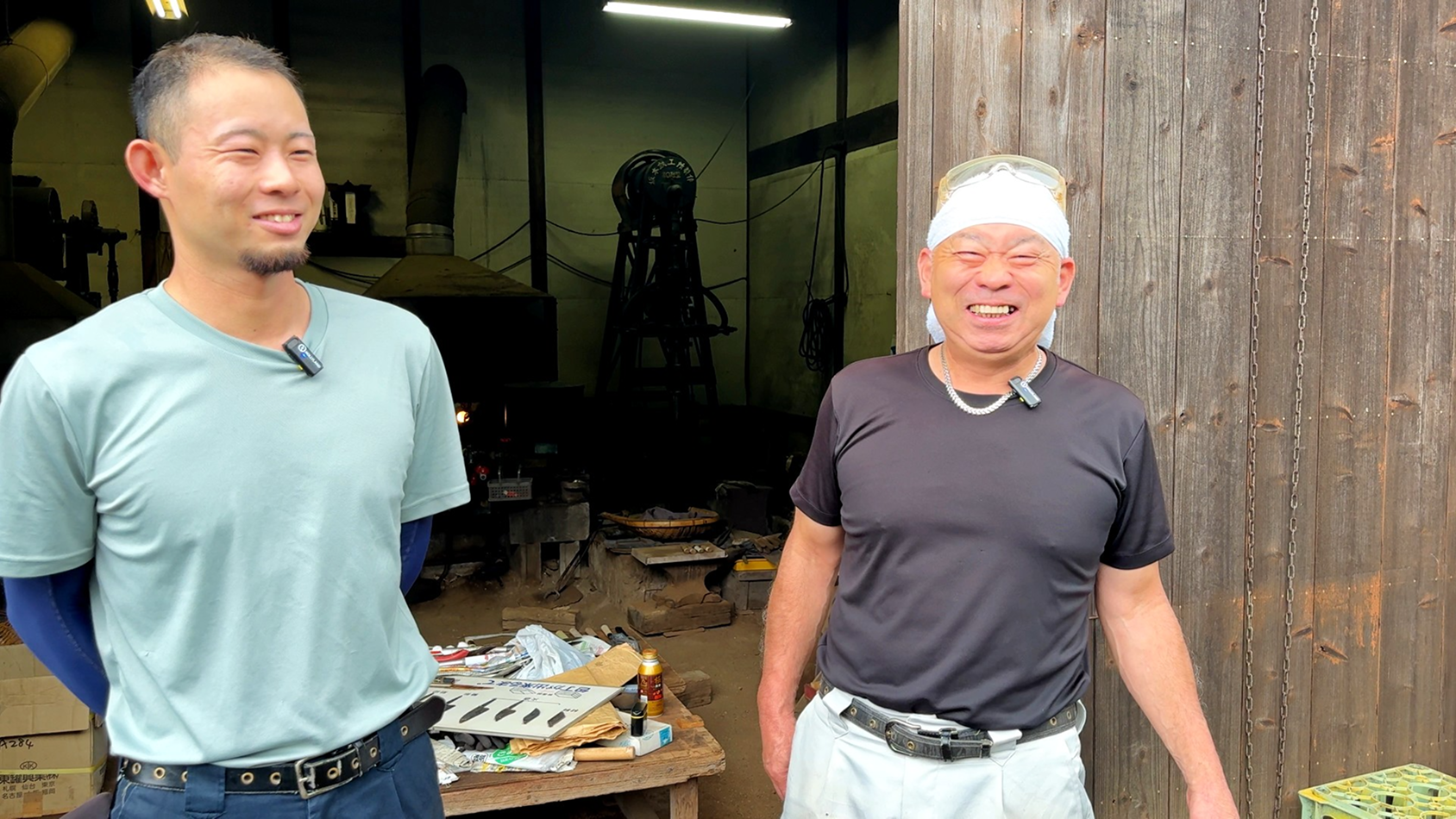
“People say, make more. We try. A knife is never finished. There is always something to improve. I learned by watching my father and I still aim to reach him.
When a customer tells us it cuts well or feels easy to use, that is enough to keep going. We rebuild when we must and we work every day to make the next one better.”
— Hiroyuki and Yuuki Inoue
How to Sharpen your knife
Here is a detailed video on how to use the included sharpening stone, with explanations from Minomo blacksmith Isamu-san!
